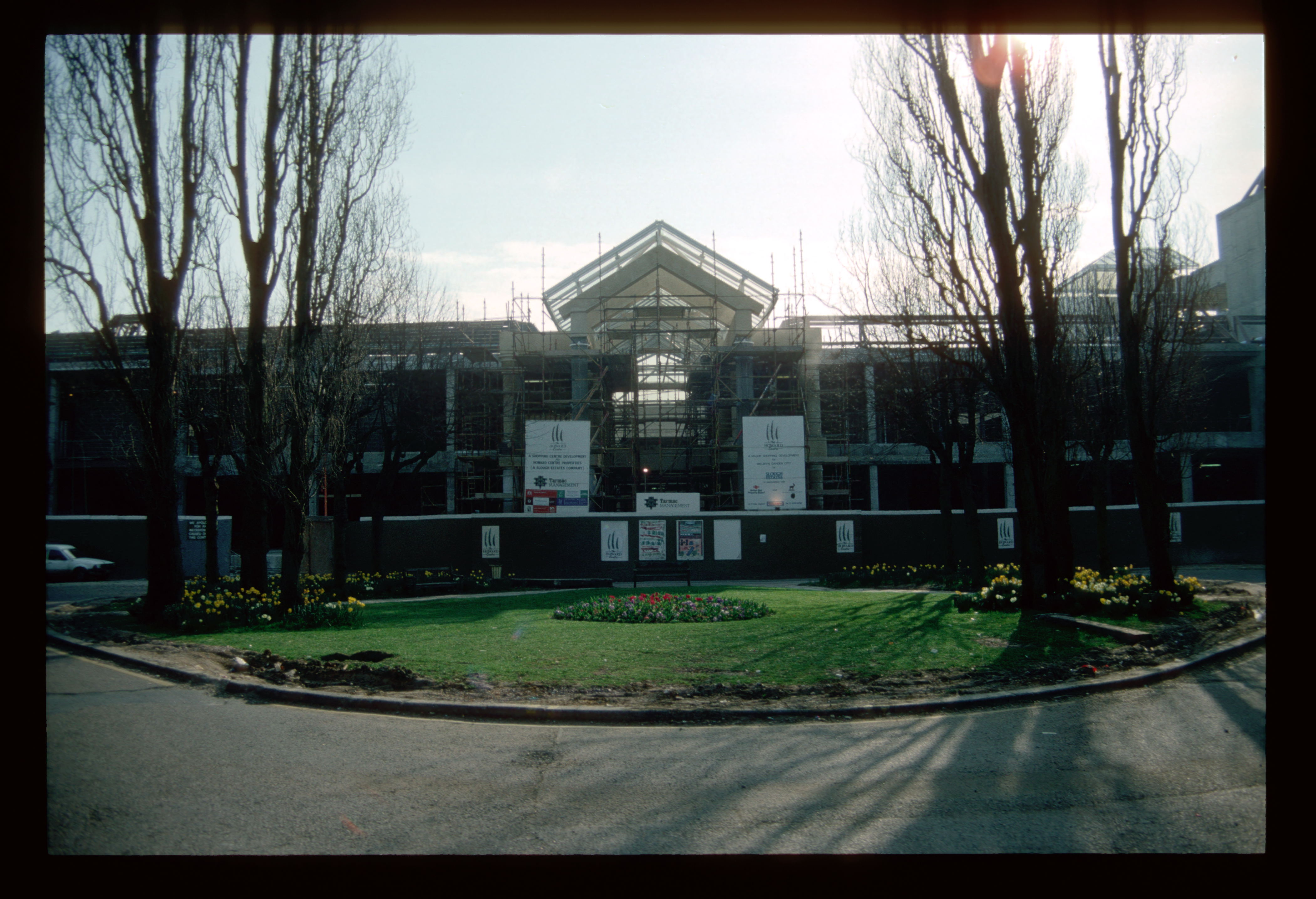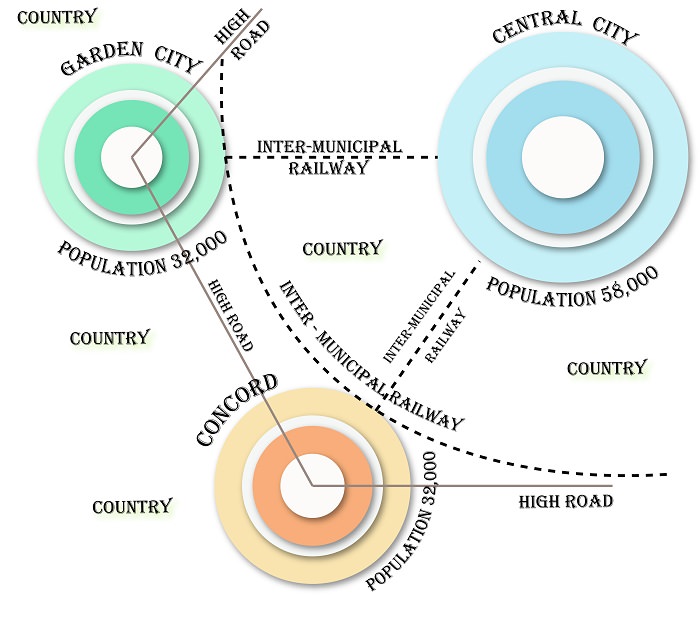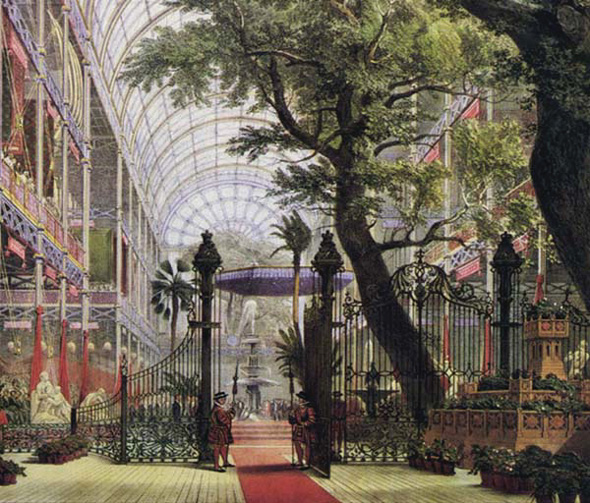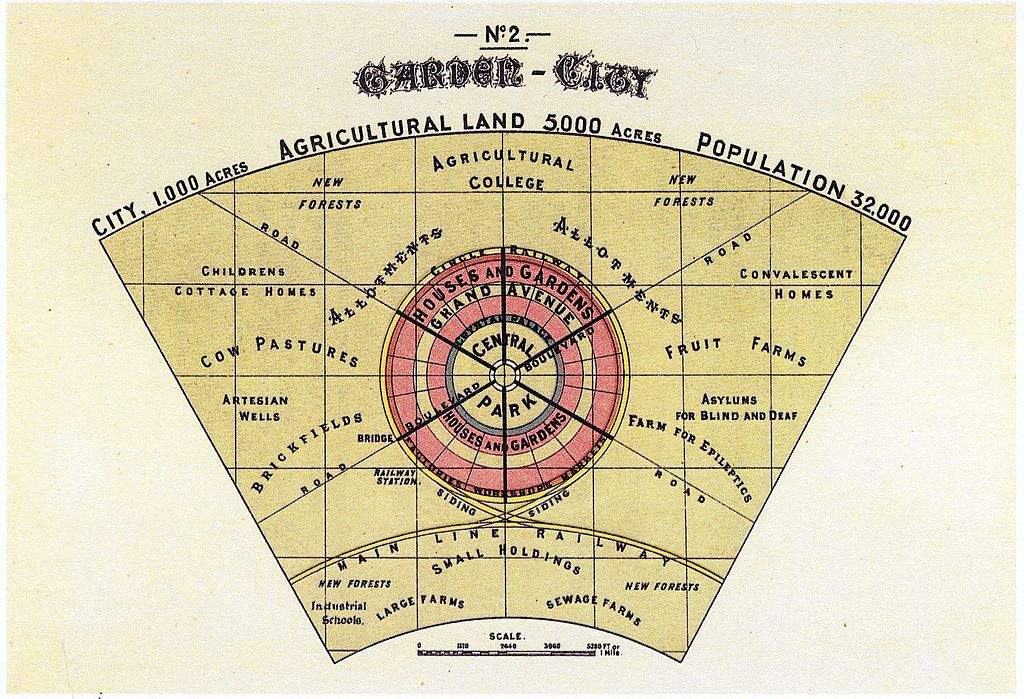
Howard Centre Building Completion Recent Images of the Town, Town
Ebenezer Howard's 'Garden City' proposal is thus arguably the most accomplished formulation of a plan for an ideal social model along the main lines of the collective psyche and experience of industrialism. In Tomorrow! A Peaceful Path to Real Reform (1898) Ebenezer Howard proposed a blueprint for an ideal society, in which he formulated.

Garden City Theory By Ebenezer Howard / Garden City Theory Plan The
garden city, the ideal of a planned residential community, as devised by the English town planner Ebenezer Howard (q.v.) and promoted by him in Tomorrow: A Peaceful Path to Social Reform (1898). Howard's plan for garden cities was a response to the need for improvement in the quality of urban life, which had become marred by overcrowding and congestion due to uncontrolled growth since the.

COMM 149 Ebenezer Howard's Garden Cities
Garden City Map by Howard. Image via Wikimedia Commons, public domain. Despite the utopian air of Howard's visions, a garden city was built in the UK a short while after the publication of his.

Are Garden Cities Sustainable? Smart Cities Dive
Ebenezer Howard's 'Garden City' proposal is thus arguably the most accomplished formulation of a plan for an ideal social model along the main lines of the collective psyche and experience of industrialism. In Tomorrow! A Peaceful Path to Real Reform (1898) Ebenezer Howard proposed a blueprint for an ideal society, in which he formulated.

LaSalle Investment Management The Howard Centre Photography
Sir Ebenezer Howard, (born Jan. 29, 1850, London, Eng.—died May 1, 1928, Welwyn Garden City, Hertfordshire), founder of the English garden-city movement, which influenced urban planning throughout the world.. After starting work in a stockbroker's office at age 15, Howard learned shorthand and held various jobs as a private secretary and stenographer before becoming a shorthand reporter in.

Savills Unit 10, The Howard Centre, Osborn Way, Welwyn Garden City
Howard's dream was to create a cluster of several garden cities as satellites of a central city of 50,000 people, and they would all be linked by road and rail. Ebenezer Howard's book was reissued in 1902 as 'The Garden Cities of To-morrow', and this reissue was successful, providing him with the support he required to bring his vision.

Ebenezer Howard Garden City Diagram vivitardf283fast
The garden city movement was inspired by a utopian city planning concept developed by Englishman Ebenezer Howard. Garden cities were designed to provide access to the best aspects of both town and.

Ebenezer Howard’s Garden Cities Are Now Embedded Into London and New
Sir Ebenezer Howard's garden city movement was one of the first inspirations for modern day urban planning. The garden city is a place that acts as a community where people from different walks of life can live and work in harmony. The concept originated from the book by Sir Ebenezer Howard in the early 1900's.

Garden Cities regional planning diagram by Ebenezer Howard City
After the Second World War, the government passed the "New Towns Act legislation" which set up the "New Town Development Corporations" with the task of developing new towns. The legislation was primarily based on Sir Howard's Garden City concept and oversaw the establishment of 15 new cities in England, as well as a few in Scotland and Wales.

READY, FIRE, AIM Ebenezer Howard Ruined Your Life Pagosa Daily Post
What Is the Garden City Movement? Born as a reaction to the crowded, dirty conditions in turn-of-the-century London and other industrial cities, the Garden City movement offers an idealized planned community designed to join elements of town and country. Ebenezer Howard / To-morrow: A Peaceful Path to Real Reform, London: Swan Sonnenschein & Co.

One of six sectors of Ebenezer Howard's Garden City in Howard & Osborn
Like so many other social planners, Ebenezer Howard's Garden City attempts to balance the forces of control and freedom, machine and garden, through the construction of the village. As we will see in our discussions of postwar public life, the increasing encroachment of the nation state on individual affairs renders his vision more and more.

Ebenezer Howard’s Garden Cities Hertfordshire Architects
Garden City Map by Howard. Via Wikimedia Commons, public domain. Ebenezer Howard (1850-1928), who had been studying cities before the establishment of urbanism as an academic field, was one of the.

The garden city movement from Ebenezer to Ebbsfleet Art and design
This article will help readers learn in-depth about Sir Ebenezer Howard's Garden Cities.The article opens by describing one of the influential urban planning movements across the globe; the Garden City Movement started by Howard through his publication named To-Morrow: A Peaceful Path to Real Reform (1898). Through this article, one would comprehend the concept and the idea, principles.

Image result for ebenezer howard garden city Garden city, Eco city
He died on 1 May 1928 in one of his own creations, Welwyn Garden City, Hertfordshire, England. Originally published by Cosmos as Ebenezer Howard gives us the garden city. Think of the world's.

ARCHI/MAPS Future city, City, Urban analysis
Garden city movement. Ebenezer Howard's three magnets diagram which addressed the question 'Where will the people go?', with the choices 'Town', 'Country' or 'Town-Country'. The garden city movement was a 20th century urban planning movement promoting satellite communities surrounding the central city and separated with greenbelts.

Cities Skylines Ebenezer Howard's Garden Cities of Tomorrow YouTube
Sir Ebenezer Howard OBE (29 January 1850 - 1 May 1928) was an English urban planner and founder of the garden city movement, known for his publication To-Morrow: A Peaceful Path to Real Reform (1898), the description of a utopian city in which people live harmoniously together with nature. The publication resulted in the founding of the garden city movement, and the building of the first.